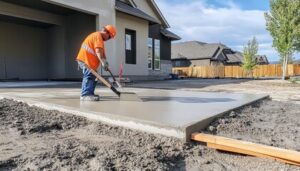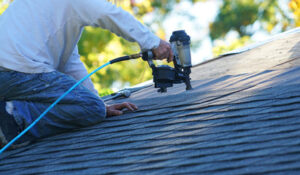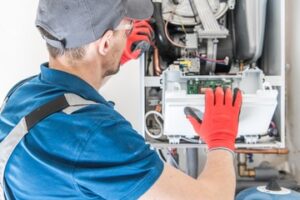Concrete Contractors are skilled professionals who specialize in turning your construction vision into reality. They interpret blueprints and designs, comply with building codes for safety, and ensure that concrete work looks professional.

To choose the best contractor for your project, it is essential to consider their experience. Ask about their past work and contact previous customers to assess the quality of their workmanship and durability.
Concrete contractors are professionals that use their skills, knowledge, and expertise to perform concrete work. They have a wide range of responsibilities, from planning to execution, and they ensure that the results will meet or exceed your expectations. In order to choose the right contractor for your project, you should consider several key elements, including experience, reputation, attention to detail, and communication skills.
When choosing a concrete contractor, you should check their credentials and certifications first. Look for a valid license to operate in your area and memberships in associations for concrete professionals, such as the National Ready Mixed Concrete Association (NRMCA) or the American Concrete Institute (ACI). These connections show that they are dedicated to continuing education and industry standards. Additionally, they will be able to provide you with references and portfolios of previous work.
Extensive Experience
Professional concrete contractors have extensive experience with various aspects of the construction process, from mixing and pouring to finishing and sealing. This experience enables them to anticipate potential issues and address them efficiently, saving you time and money. Moreover, they know how to deal with building codes and pull permits, which reduces your stress and hassle.
In addition to their specialized expertise, concrete contractors also possess excellent problem-solving skills. They can handle unexpected issues quickly and effectively, ensuring that your project stays on schedule and meets all of the required specifications. This way, you can rest assured that your concrete project will be structurally sound and will withstand the test of time.
A reliable contractor will always treat your project as if it were their own, and they will go the extra mile to deliver quality results that meet or exceed your expectations. They will communicate clearly and thoroughly with you throughout the project, preventing misunderstandings and keeping you updated on progress.
When evaluating quotes from different contractors, look for a detailed estimate that includes the cost of materials and labor as well as any additional costs that might apply, such as demolition or site preparation. This will prevent misunderstandings and ensure that all parties are on the same page with regards to expectations and budget.
Experience
Concrete contractors might not grab headlines like architects or interior designers, but they play a critical role in bringing construction visions to life. Their skill and expertise ensure that concrete structures are strong, durable, and built to last.
Choosing the right contractor for your commercial concrete project requires careful consideration of several factors. You should consider the contractor’s experience level, past projects, and references. Asking for a detailed project timeline, cost estimates, quality assurance practices, change management, and credentials can also be useful in making your decision.
While it’s not an absolute requirement, contractors with years of industry experience tend to be more adept at handling various challenges that can arise during a project. Their knowledge of the different strategies to take can help them complete your project efficiently and within budget.
Professional contractors also know how to utilize a variety of tools that can deliver precise and clean results. From mixers and floats to joint cutters and saws, they have everything needed to handle any type of concrete project. On the other hand, attempting to DIY a concrete project without the proper equipment can be costly and result in subpar quality.
Another important factor to consider is whether or not the contractor has the required licensing for your project. Most states have online portals that can be used to check a contractor’s license status and qualifications. This step can save you time and effort by eliminating contractors who don’t meet your state’s requirements.
A concrete contractor who is passionate about his or her work can provide superior results that are both functional and visually appealing. Being able to create something that is both sturdy and aesthetically pleasing is a great feeling, and it’s why many people choose to become concrete contractors.
When selecting a concrete contractor for your next project, look at their portfolio to get an idea of the types of work they’ve done. Additionally, it’s a good idea to schedule multiple estimates from different contractors so that you can compare prices and costs. By taking the time to make a well-informed decision, you can be confident that your project will turn out just as you’d imagined it.
Commitment to Quality
While concrete may seem like a simple construction material to many people, working with it requires exceptional attention to detail. Professional contractors understand the complexities involved and are committed to providing quality workmanship. This commitment enables them to save you money in the long run by eliminating the need for costly repairs or replacements. Additionally, experienced contractors are able to provide valuable insights and recommendations that will help enhance the overall project outcome.
When evaluating potential contractors, request a portfolio of previous projects and client testimonials. Reviewing these references will offer insight into the contractor’s artistry, as well as their reliability and professionalism. Additionally, customer reviews and ratings on online platforms can also be a great resource when assessing a contractor’s reputation.
Look for a contractor who is transparent about their processes, materials, and pricing. They should be able to clearly explain technical details in a manner that is easy for you to understand and answer questions thoroughly. They should also be able to provide you with a detailed estimate that includes all projected costs and any potential changes or additions to the scope of work.
Inquire about the length and terms of a contractor’s warranty. A comprehensive warranty is a good indicator of a contractor’s confidence in their workmanship, as well as their willingness to stand behind the work they do. You should also discuss their approach to post-project support, including whether they offer follow-up inspections or maintenance services.
Finally, ask about the contractor’s estimated timeline for completing your project. This will allow you to assess their availability and determine if they are a good fit for your project. Moreover, it will help you to establish clear expectations and avoid any misunderstandings or confusion throughout the project’s duration. In addition, you should also ask the contractor to provide progress updates on a regular basis and ensure that you are updated about any issues or concerns as they arise. This will prevent any unforeseen delays or unexpected circumstances from negatively impacting the completion of your project.
Free Estimate
A good concrete contractor will be happy to provide you with a free estimate of the cost of your project. They will also be able to answer any questions you may have and discuss details such as timelines, down payment requirements, and payment methods.
When you’re meeting with contractors, it’s a good idea to ask for details about their previous work. You’ll want to find out what kind of projects they have completed and whether or not the concrete has held up well over time. Make sure to inquire about the quality of their finish work as well, and ask them to describe what techniques they use for their decorative concrete.
In addition, it’s important to check the contractor’s insurance coverage before hiring them for a job. This will ensure that if there is an accident on the job site, you’ll be protected in case of any liability. A professional concrete contractor should have, at a minimum, general liability and workers’ compensation insurance.
While you’re meeting with potential contractors, you should also get a feel for how they communicate and interact with their customers. This will give you a sense of how they will treat you and your project as it’s being completed. In addition, asking what their pricing structure is can help you determine which contractor is the best fit for your needs.
Concrete contractors are responsible for a wide range of construction projects, including driveways, sidewalks, patios, and building foundations. Their work requires precise measurements and a solid construction design to withstand heavy loads. They also coordinate with other contractors and construction professionals to ensure that their concrete work is in compliance with the building’s design and structural requirements.
One of the most common mistakes that concrete contractors make is failing to understand the contract specifications that they’re working under. This can lead to change orders that can be more costly than the original bid amount. It’s a good idea for a concrete contractor to become familiar with the ACI reference documents, which are designed to serve as the basis of the standard contract specification for the construction industry.


